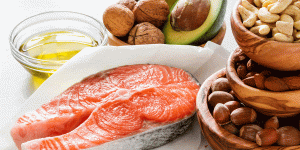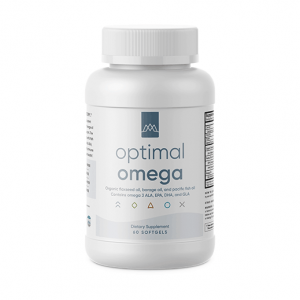High Blood Pressure and Hypertension
- What is Normal Blood Pressure?
- What is High Blood Pressure?
- Low Blood Pressure: Also a Concern
- Identifying High Blood Pressure
- 7 Strategies to Reduce High Blood Pressure Naturally

High blood pressure affects 25 percent of the world’s population. Far from being an isolated problem, experts consider it a risk factor for many diseases. Over time, high blood pressure can lead to conditions including hardening of your arteries (atherosclerosis), stroke, kidney disease, and heart failure.
Your heart may be the hardest-working organ in your body. It is primarily a muscle that pumps blood to organs and tissues that require nutrients and oxygen.
Your heart pumps that blood via blood vessels, which distribute it throughout your body. You or your doctor can determine how efficiently your heart pumps or distributes that blood by measuring your blood pressure.
What is Normal Blood Pressure?
Two numbers define blood pressure measurements:
- Systolic blood pressure is the top number and reflects how much pressure your blood exerts against your artery walls when the heart beats.
- Diastolic blood pressure is the bottom number measures how much pressure your blood exerts against your artery walls while your heart rests between beats.
A measurement called millimeters of mercury (mm Hg) is used to measure pressure. So if your healthcare professional gets a reading of “120/ 80 mm Hg,” the 120 is your systolic blood pressure; the 80 is your diastolic blood pressure.
Both numbers are important. However, many doctors prioritize systolic blood pressure, which can be a major risk factor for cardiovascular disease once you hit 50. Systolic blood pressure increases with age due to stiffening arteries, plaque build-up, and an increased risk for cardiac and vascular disease.
According to the American Heart Association, normal blood pressure is less than 120 (systolic) and less than 80 (diastolic). In other words, you want to keep those numbers below 120 and 80 (respectively).
An elevated blood pressure range would fall between 120 – 129 and less than 80. In other words, elevated blood pressure means systolic blood pressure is slightly elevated but your diastolic blood pressure would still be normal.
Elevated blood pressure becomes a warning sign that something needs to change or you can become at risk for all the problems high blood pressure creates. The good news is with the right strategies below, you can normalize blood pressure.
What is High Blood Pressure?
The American Heart Association categorizes high blood pressure or hypertension into three stages (again, the first number is systolic and the second is diastolic):
- Stage 1: 130 – 139 or 80 – 89
- Stage 2: 140 or higher or 90 or higher
- Stage 3: higher than 180 and/ or higher than 120. Stage 3 constitutes a hypertensive crisis and you should see your doctor immediately if you measure blood pressure at home.
High blood pressure is a gradual process; it doesn’t happen overnight. Checking your blood pressure regularly (some pharmacies and stores offer free blood pressure machines) and regular visits to your doctor can detect early stages of high blood pressure before it becomes a serious condition.
Signs Your Blood Pressure Is Too High
Unfortunately, high blood pressure is a “silent killer” with very few warning signs. Many people don’t even know they have it as it develops slowly over time. The only way to truly know whether you have high blood pressure is to measure it regularly.
Among the symptoms that may be related to (but aren’t always caused by) elevated blood pressure levels include:
- Blood spots in the eyes
- Facial flushing
- Dizziness (some blood pressure medications can create dizziness)
- Fatigue
- Confusion
- Chest pain
- Irregular heartbeat
- Vision problems
- Pounding in your chest, neck, or ear
- Blood in your urine
 Worth repeating: Many of these signs are related to but not created by high blood pressure, which often presents few if any overt signs.
Worth repeating: Many of these signs are related to but not created by high blood pressure, which often presents few if any overt signs.
If you suspect that you have high blood pressure, please don’t diagnose yourself. A healthcare professional can diagnose your condition and then discuss treatment options, including dietary and lifestyle modifications for high blood pressure.
What Causes High Blood Pressure?
For most Americans with high blood pressure (95 percent, in fact), doctors can’t determine the exact underlying cause. They classify this type of high blood pressure as essential hypertension or primary hypertension because it doesn’t have an obvious secondary cause.
Even when doctors can’t determine the underlying cause, certain risk factors contribute to essential or primary hypertension, including:
- Gender (men are more affected than women)
- Race (African-Americans are twice as likely to have high blood pressure as Caucasians)
- Age
When doctors can identify a direct cause for high blood pressure, they classify it as secondary hypertension. In other words, something is creating that blood pressure to skyrocket. Kidney disease is the highest cause of secondary hypertension. Some medications including birth control pills can also raise blood pressure.
Like many diseases, high blood pressure is multifactorial: More than one culprit typically creates it. Among the top ones include:
- Smoking
- Overweight or obesity
- Being sedentary
- A high-salt diet (typically coming from the salt shaker and processed foods, some of which may not taste salty)
- Stress
- Age
- Familial history
- Drinking too much alcohol
- Thyroid or adrenal disorders
You can’t control your age or genetics, but many other factors here are entirely within your ability to normalize high blood pressure.
Consequences of High Blood Pressure
Nearly every organ in your body demands a constant blood supply. When that blood flow becomes impaired, serious problems can occur.
Over time, untreated high blood pressure can lead to serious problems including:
- Heart disease
- Kidney failure
- Artery damage including hardening of the arteries
- Erectile dysfunction
- Stroke
- Blood clots
- Osteoporosis
- Blurred vision or vision loss
- Dementia
- Memory and learning problems
Low Blood Pressure: Also a Concern
Balance becomes key for many systems in your body, including blood pressure. That means you certainly don’t want high blood pressure, but neither do you want blood pressure to fall too low.
A reading lower than 90 (systolic) or 60 (diastolic) would usually be classified as low blood pressure or hypotension. Dizziness, nauseousness, fatigue, and fainting are among the symptoms of low blood pressure.
Causes of low blood pressure include dehydration and serious medical disorders. While it might seem innocuous, low blood pressure can become life-threatening.
“There is also no specific number at which day-to-day blood pressure is considered too low, as long as none of the symptoms of trouble are present,” says the American Heart Association.
In other words, whereas we do have specific systolic and diastolic numbers to define specific levels of high blood pressure, experts have no specific numbers to define low blood pressure. Specific symptoms instead define hypotension.
Regardless, always discuss low blood pressure with your physician to determine the underlying causes and treatment.
Identifying High Blood Pressure
 Blood pressure fluctuates throughout the day, so measuring it in the morning might yield a different number than, say, the afternoon. Conditions like stress and lack of sleep can also fluctuate blood pressure. Visiting your doctor might feel nerve-wracking, which can elevate your blood pressure and create a condition called white coat hypertension.
Blood pressure fluctuates throughout the day, so measuring it in the morning might yield a different number than, say, the afternoon. Conditions like stress and lack of sleep can also fluctuate blood pressure. Visiting your doctor might feel nerve-wracking, which can elevate your blood pressure and create a condition called white coat hypertension.
Because of these factors, your doctor will probably take two to three blood pressure readings each at three or more separate appointments before he or she diagnoses you with high blood pressure.
To diagnose high blood pressure, your doctor will review your medical history and possibly conduct additional tests, including:
- A urine test (urinalysis)
- Blood tests (including cholesterol testing)
- An electrocardiogram (measures your heart’s electrical activity)
- Echocardiogram (to check for more signs of heart disease)
To confirm high blood pressure, your doctor might also do a 24-hour blood pressure monitoring test (called an ambulatory blood pressure monitoring) and ask you to check your blood pressure at home (to minimize white coat hypertension).
7 Strategies to Reduce High Blood Pressure Naturally
Eventually, untreated high blood pressure can have dire consequences. Fortunately, you have a number of strategies to normalize blood pressure. Normalized blood pressure means you have less of a risk for many problems including cardiovascular disease.
While researchers aren’t always able to narrow down the culprits, they’ve concluded that diet and lifestyle factors significantly impact high blood pressure. After your doctor diagnoses you with high blood pressure, he or she will likely suggest dietary and lifestyle modifications including a low-salt diet and more exercise.
With the right strategies, you can do plenty to normalize high blood pressure and avoid or lessen the need for medication. These seven strategies become an excellent starting point.
1. Concentrate on foods that lower blood pressure.  Sugary, processed foods contain salt, sugar, damaged fats, and food sensitivities like gluten that contribute to or exacerbate high blood pressure. Shifting to a whole, unprocessed foods diet can dramatically impact your blood pressure. Many whole, unprocessed foods are rich in potassium, a mineral that supports healthy blood pressure. Some research shows that too much sodium and low amounts of potassium – can contribute to high blood pressure. Research shows people with high blood pressure can benefit from increased potassium in foods including avocado, spinach, wild-caught salmon, and sweet potatoes.
Sugary, processed foods contain salt, sugar, damaged fats, and food sensitivities like gluten that contribute to or exacerbate high blood pressure. Shifting to a whole, unprocessed foods diet can dramatically impact your blood pressure. Many whole, unprocessed foods are rich in potassium, a mineral that supports healthy blood pressure. Some research shows that too much sodium and low amounts of potassium – can contribute to high blood pressure. Research shows people with high blood pressure can benefit from increased potassium in foods including avocado, spinach, wild-caught salmon, and sweet potatoes.
2. Take the right nutrients.  Talk with your chiropractor or other healthcare professional about the wide range of well-studied nutrients that, along with dietary and lifestyle modifications, can help normalize your blood pressure. One meta-analysis found magnesium supplements could lower blood pressure. Likewise, researchers find a small but significant decline in blood pressure for people with hypertension who use fish oil. (You can get all of fish oil’s benefits combined with anti-inflammatory flax oil and GLA in our Optimal Omega.)
Talk with your chiropractor or other healthcare professional about the wide range of well-studied nutrients that, along with dietary and lifestyle modifications, can help normalize your blood pressure. One meta-analysis found magnesium supplements could lower blood pressure. Likewise, researchers find a small but significant decline in blood pressure for people with hypertension who use fish oil. (You can get all of fish oil’s benefits combined with anti-inflammatory flax oil and GLA in our Optimal Omega.)
3. Implement strategies to lower inflammation. Several cross-sectional and longitudinal studies connect high blood pressure with chronic inflammation, a driving force for nearly every disease on the planet. Lowering inflammation starts with what you put on your fork. Focus on anti-inflammatory foods like wild-caught seafood (rich in omega-3 fatty acids), freshly ground flax and chia seeds, spices like turmeric, and plenty of colorful plant foods. Good sleep, stress management, exercise, and the right nutrients can also help lower inflammation.
4. Find an exercise that works for you (and do it).

Moving more can help reverse high blood pressure. One meta-analysis of 65 studies found regular exercise provides both an acute and longer-term reduction in blood pressure. Whether you’re an exercise novice or a conditioned athlete, these four strategies can help you create an effective workout plan to optimize health.
5. Get the right amount of sleep. Research shows chronic sleep deprivation can contribute to high blood pressure. But studies also find that both too little or too much sleep could both be risk factors for high blood pressure. You want to aim for quality and quantity: Shoot for seven or eight hours of uninterrupted sleep every night.
6. Cultivate stress management. You don’t need a meta-analysis of cohort studies to prove stress can raise blood pressure, but they exist. You can’t eliminate stress, but you can minimize its impact. Research shows yoga and meditation create effective strategies to manage stress and blood pressure. If those aren’t your thing, consider other stress-relieving tactics including deep breathing or practicing mindfulness.
7. Visit your chiropractor.

A special chiropractic adjustment could significantly lower high blood pressure, a placebo-controlled study suggests. “This procedure has the effect of not one, but two blood-pressure medications given in combination,” study leader George Bakris, MD, told WebMD. Your chiropractor can create an effective protocol that may help normalize blood pressure without medication or other invasive procedures.
High blood pressure can become a red flag for many underlying problems including cardiovascular disease. Working with a healthcare professional along with dietary and lifestyle modifications can help normalize high blood pressure and prevent or reverse many problems associated with hypertension.


